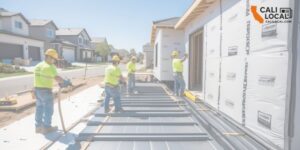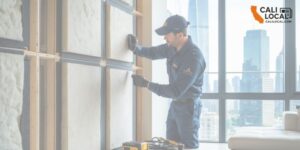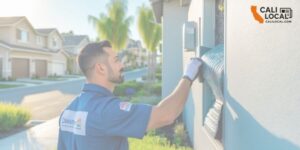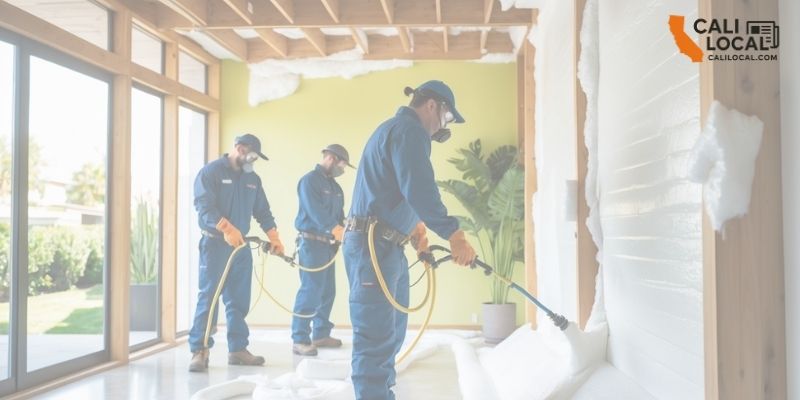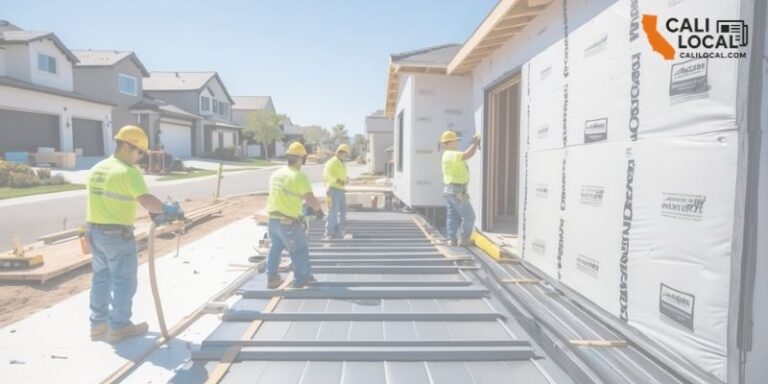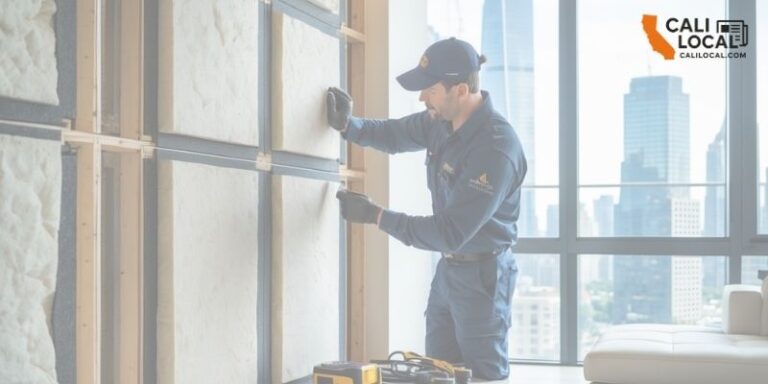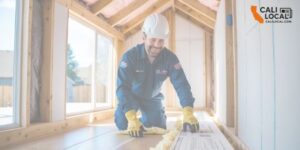Air Tight Insulation of Burbank now offers eco-friendly spray foam insulation designed specifically for local homes. This new solution provides a way to improve energy efficiency while reducing environmental impact. Homeowners can expect better temperature control and lower utility bills without compromising on quality.
Spray foam insulation expands to fill gaps and cracks, creating an airtight seal that minimizes air leaks and lowers heating and cooling costs. The eco-friendly option also supports healthier indoor air quality and helps reduce the overall carbon footprint of a home.
By introducing this advanced insulation method, Air Tight Insulation of Burbank aims to meet the growing demand for sustainable home improvements. Their expertise ensures that these solutions deliver practical benefits to homeowners throughout the area.
Eco-Friendly Spray Foam Insulation: A Game Changer for Burbank Homes

Air Tight Insulation offers solutions that improve energy efficiency and comfort while focusing on sustainability. Their eco-friendly spray foam products provide effective air sealing, moisture control, and long-term durability for local homeowners. These advanced materials outperform many traditional insulation types, bringing clear benefits in Burbank’s climate.
How Spray Foam Insulation Works
Spray foam insulation is made from polyurethane and applied as a liquid that expands to fill gaps and cavities in walls, ceilings, and floors. This expansion creates a tight air seal and adds thermal resistance or R-value, reducing heat loss or gain.
There are two main types: open cell and closed cell spray foam. Open cell foam has a lower density with cells that are not fully closed. It is lighter and uses fewer chemicals, providing good air and vapor barrier properties. Closed cell foam is denser, creating a stronger barrier with higher R-value and better moisture resistance.
Both types act as air barriers that stop drafts, helping homes maintain a stable temperature with less energy use.
Key Benefits Over Traditional Insulation
Eco-friendly spray foam insulation outshines traditional insulation materials like fiberglass and cellulose in several ways:
- Air Sealing – Spray foam closes small cracks and holes better than fiberglass batts, reducing air leaks.
- Higher R-Value – Closed cell spray foam has an R-value of about 6 to 7 per inch, much higher than fiberglass’s typical 3 to 4.
- Durability – It lasts for decades without sagging or settling, unlike cellulose which can settle or absorb moisture.
- Moisture Control – Spray foam prevents moisture intrusion, lowering risks of mold and rot.
These benefits add up to lower energy bills and improved indoor comfort for Burbank homes while reducing maintenance.
Types of Eco-Friendly Spray Foam Solutions
Air Tight Insulation offers eco-friendly spray foam products that prioritize sustainability by using materials that are non-toxic, recyclable, and renewable when possible.
The main types provided include:
| Type | Density | R-Value Per Inch | Key Features | Best Use |
|---|---|---|---|---|
| Open Cell Foam | Low | 3.5 – 4 | Air barrier, vapor semi-permeable | Interior walls, ceilings |
| Closed Cell Foam | High | 6 – 7 | Vapor barrier, moisture resistant | Exterior walls, roofs |
Choosing between open and closed cell depends on the home’s needs for thermal resistance, moisture control, and budget.
Role in Moisture and Air Management
Moisture and air management is critical in Burbank due to its warm, dry climate with occasional humidity.
Eco-friendly spray foam creates a continuous seal that:
- Blocks air leaks that can bring humidity or dry air inside.
- Acts as a vapor barrier with closed cell foam to prevent moisture buildup.
- Reduces the risk of mold growth and wood damage.
- Helps maintain consistent indoor humidity levels.
By combining air sealing and moisture control, these insulation solutions protect homes from seasonal changes and increase indoor comfort year-round.
Improving Home Comfort and Environmental Impact with Sustainable Insulation

Using eco-friendly spray foam insulation can reduce energy loss and lower energy costs while improving indoor air quality. It also helps cut down the home’s carbon footprint by using safer materials and sustainable practices that protect the environment.
Enhancing Energy Efficiency and Cost Savings
Eco-friendly spray foam insulation minimizes air leaks and seals gaps in walls and roofs. This stops energy from escaping and keeps homes warmer in winter and cooler in summer.
Because it has a high R-value per inch, it offers better insulation in less space compared to traditional materials. This leads to notable energy savings and lowers utility bills over time.
Homeowners often see long-term savings due to reduced heating and cooling needs. Using renewable materials in insulation also adds to eco-friendliness without compromising performance or durability.
Promoting Healthier Indoor Air Quality
Sustainable spray foam uses fewer harmful chemicals and releases very low levels of volatile organic compounds (VOCs). This reduces the risk of allergic reactions and respiratory issues.
By sealing the home tightly, it also prevents dust, pollen, and moisture from entering, which can worsen indoor air quality. Improved air quality creates a healthier living environment for all family members.
The use of non-toxic, eco-friendly options supports safer air inside the home without sacrificing insulation benefits or comfort.
Professional Installation and Sustainable Practices
Proper installation ensures the insulation functions efficiently and maintains its eco-friendly benefits over time. Trained professionals follow strict guidelines to limit waste and prevent damage during the process.
They also select materials based on sustainability, avoiding those with high environmental impact or toxic chemicals. Sustainable practices in installation extend beyond just the insulation, including proper disposal and recycling.
By relying on experts, homeowners get both quality comfort and assurance that their investment supports environmental goals.
- Air Tight Insulation of Burbank
- 3809 W Burbank Blvd, Burbank, CA 91505, USA
- 818-477-1618
- airtightinsulationca.com/burbank/
Frequently Asked Questions
Spray foam insulation offers strong energy savings and air sealing, but it is important to understand health effects, installation standards, and product qualities. Proper care during installation and product choice can affect its performance and safety.
What are the potential health impacts of spray foam insulation?
Spray foam can release chemicals while curing, which may cause irritation to the eyes, skin, or lungs. Proper ventilation and professional installation reduce health risks.
Once cured, spray foam generally does not emit harmful chemicals. People sensitive to chemicals should consider this before installation.
How does spray foam insulation compare to traditional insulation methods in terms of efficiency?
Spray foam creates an air-tight seal, blocking drafts better than fiberglass or cellulose insulation.
This improves energy efficiency by reducing heat loss and lowering energy bills. It also limits air flow through cracks and gaps.
Can spray foam insulation be safely removed or replaced?
Yes, spray foam can be removed, but the process requires caution and professional help.
Removing spray foam may damage walls or surfaces and could produce dust and particles that need to be handled properly.
What certifications should eco-friendly spray foam products carry?
Eco-friendly spray foam products often carry certifications for low emissions, such as GREENGUARD or Third-Party Environmental Product Declarations.
These certifications indicate the products meet standards for indoor air quality and environmental safety.
How long does spray foam insulation last once applied?
Spray foam insulation typically lasts 20 to 30 years or more when properly installed.
Its durability depends on moisture control and avoiding physical damage to the foam.
What measures are in place to ensure proper installation of eco-friendly spray foam insulation?
Proper installation involves trained technicians using the right equipment and following manufacturer guidelines.
Inspections and quality controls ensure the foam is applied evenly and fully cures to provide maximum efficiency and safety.


